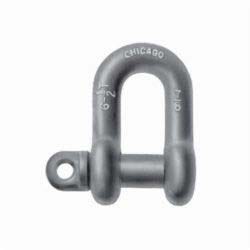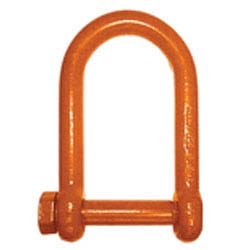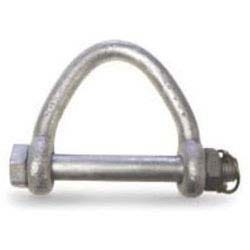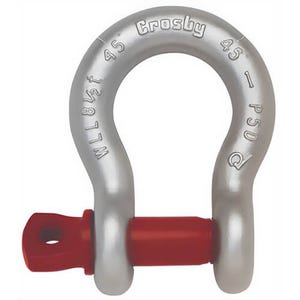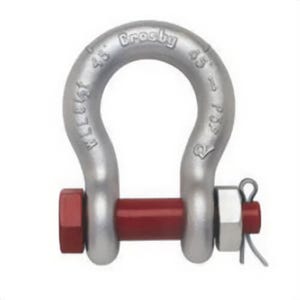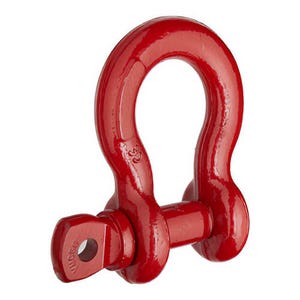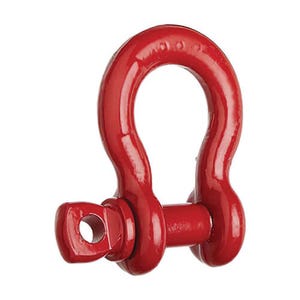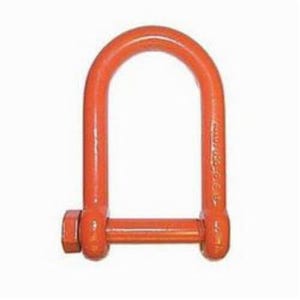Lifting shackles are an essential asset used extensively in rigging, hoisting, and lifting operations across numerous industries, including construction, maritime, transportation, and manufacturing. They provide a secure connection between lifting equipment and the load, ensuring safe and efficient material handling. Understanding their types, construction materials, applications, and safety practices is crucial to prevent accidents and optimize lifting tasks.
Types of Lifting Shackles
1. Bow Shackles (Anchor Shackles)
Bow shackles have an O-shaped bow, simultaneously accommodating multiple slings or load directions. They are ideal in multi-directional pulls, where they can minimize the risk of side-loading, making them highly versatile. Due to the shape, bow shackles slightly reduce overall strength compared to straight shackle alternatives.
2. D-Shackles (Chain Shackles)
These shackles are optimal for straight-line loading, featuring a narrow, "D"-shaped design. They are most commonly used when the load is directly in line with the shackle body, as side-loading can compromise the structural integrity of your lift.
3. Screw Pin Shackles
The screw pin design is the most common type, allowing for easy assembly and disassembly without the need for tools. They are ideal for temporary installations or jobs where shackles must be frequently repositioned
4. Bolt Type Shackles
Bolt type shackles feature a bolt and nut with an additional safety pin or cotter pin, providing extra security during your lift. These shackles are suitable for long-term or permanent installations, particularly under high vibration or continuous load conditions where hazardous pin loosening could occur.
5. Snap Shackles
Snap shackles incorporate a spring-loaded mechanism, enabling quick and single-handed operational use. They’re ideal for applications that require rapid attachment and release, but they’re not recommended for heavy lifting or high-load environments due to potential safety risks.
6. Twist Shackles
With a 90-degree twist in their design, twist shackles are specifically designed and well utilized in rigging situations requiring attachment points at perpendicular angles, reducing twisting forces on rigging components.
7. Soft Shackles
Soft shackles are made from high-strength synthetic fibers and provide a lightweight, flexible alternative to traditional metal shackles. These shackles are beneficial for minimizing damage to sensitive equipment, but usage requires protection from abrasive surfaces, sharp edges, and heat.
Materials Used for Shackles
• Carbon Steel: Common and cost-effective, suitable for general lifting applications.
• Alloy Steel: Offers greater strength and higher Working Load Limits (WLL), suitable for rigorous heavy-lifting tasks.
• Stainless Steel: Ideal for marine or corrosive environments due to excellent corrosion resistance.
• Synthetic Fiber: Used exclusively for soft shackles, offering lightweight yet robust strength with careful handling.
Selecting the Right Shackle
Choosing the right shackle involves evaluating:
• Working Load Limit (WLL): Always select shackles rated at or above the load capacity required.
• Load Direction: Understand if loads will be multi-directional or straight-line, influencing the shackle type.
• Environment: Corrosive or abrasive conditions like stainless steel or synthetic fibers may dictate material choices.
Inspection and Maintenance
Regular inspection is crucial to ensure the integrity and safety of lifting shackles. Key inspection points include:
• Wear and Tear: Check for visible signs of deformation, corrosion, cracking, or excessive wear.
• Pin Integrity: Ensure pins and securing mechanisms (screw pins, bolts, cotter pins) are intact and functional.
• Thread Condition: Threads should be clean, well-lubricated, and undamaged for smooth operation and secure fastening.
Any shackle showing signs of damage or deterioration should be removed from service and replaced immediately.
Best Practices for Safe Use
• Avoid Side Loading: Side-loading can significantly reduce a shackle’s strength. Always position the load directly in line with the shackle body unless using a bow shackle designed for multi-directional loads.
• Secure Pins Properly: Screw pins must be hand-tightened securely and checked regularly. Bolt pins must always use cotter pins or safety devices to prevent loosening.
• Match Components: Ensure shackles are compatible with other rigging components, considering size, strength, and connection methods.
• Use Proper PPE: Operators must wear appropriate personal protective equipment (PPE), including gloves, helmets, and safety goggles, during rigging and lifting operations.
• Adhere to Regulations: Always follow industry regulations, standards, and best practices, such as OSHA and ASME guidelines, to ensure safety and compliance.
Typical Applications of Lifting Shackles
• Construction: Lifting and positioning heavy building materials like beams and prefabricated structures.
• Maritime: Anchoring, mooring, and cargo lifting operations.
• Manufacturing: Handling heavy equipment and machinery components.
• Transportation and Logistics: Securing and lifting cargo and shipping containers.
With a thorough understanding of lifting shackles, their proper usage, and necessary safety considerations, operators can significantly enhance operational efficiency, reduce risks, and maintain compliance with industry standards. Adequate training, routine inspections, and adherence to best practices ensure that lifting shackles serve as dependable assets in your rigging toolkit.
Why Choose Hanes Supply Inc. for Your Shackles?
HSI is a trusted leader in lifting and rigging equipment, known for exceptional quality, extensive inventory, and industry expertise. Offering top-quality shackles from leading manufacturers, HSI ensures safety, reliability, and compliance with industry standards. With our knowledgeable team, we’ll provide you with expert guidance in selecting the proper shackles for your lifting operation!



